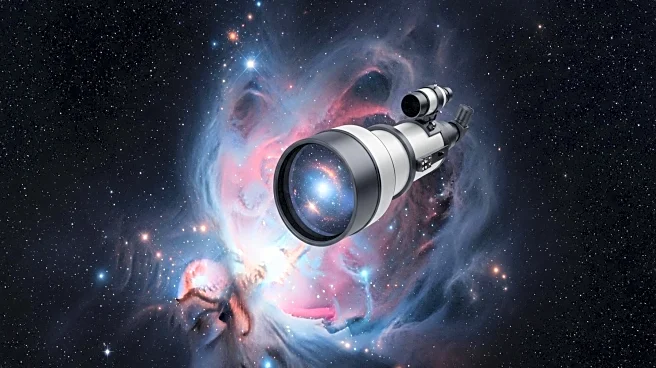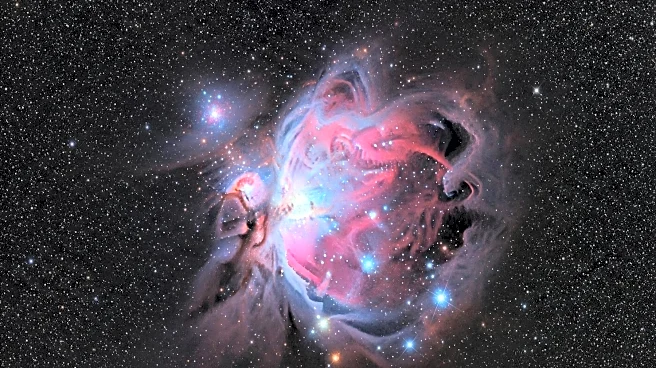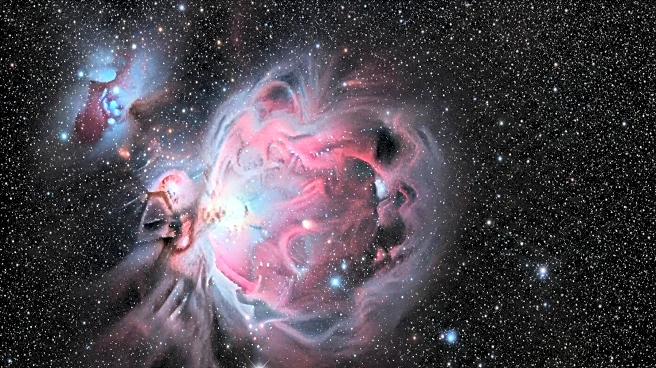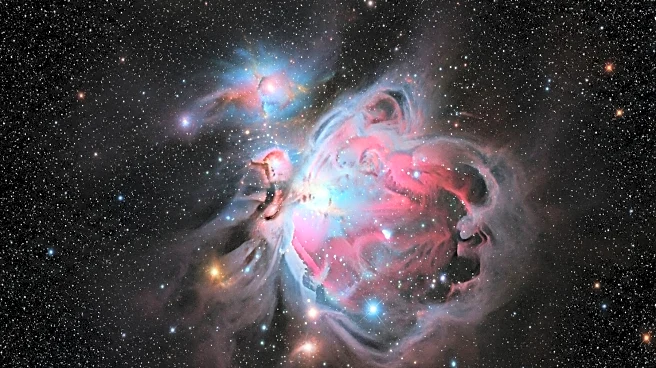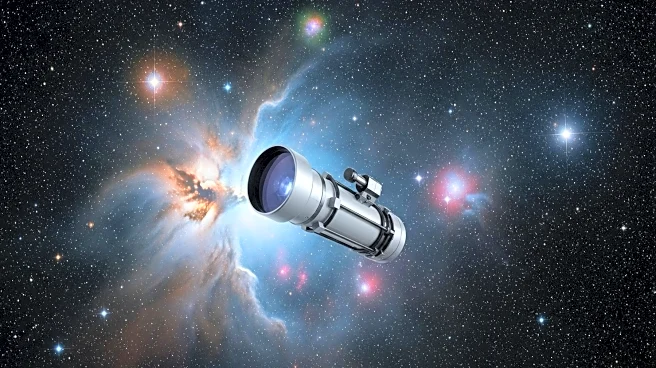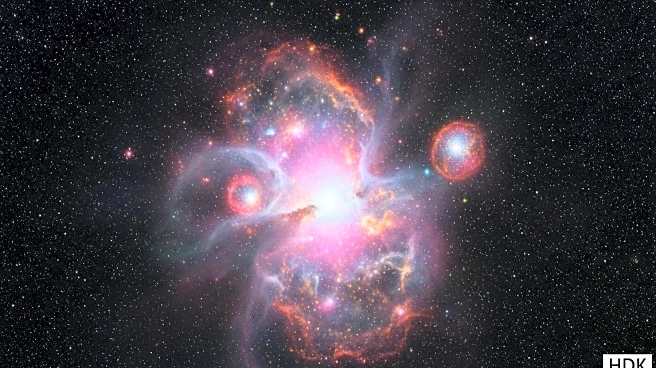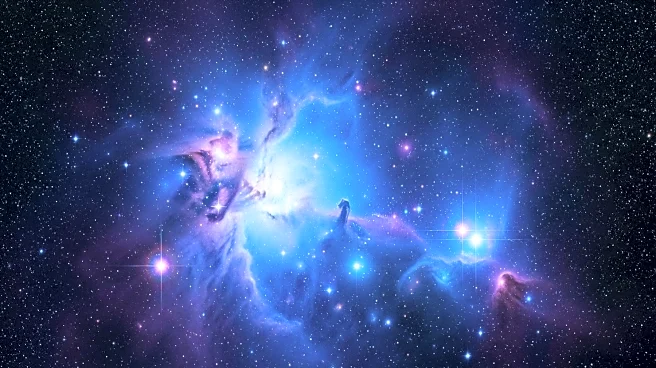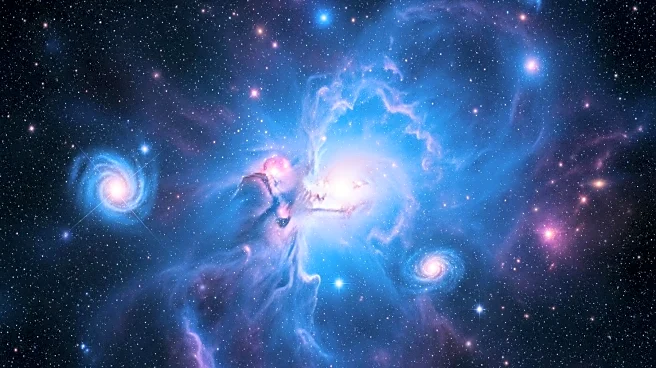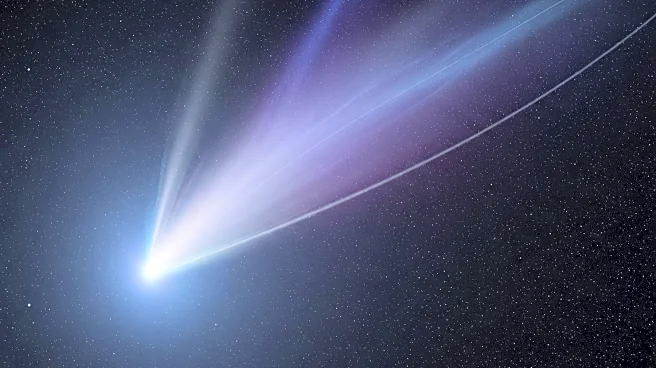What's Happening?
The James Webb Space Telescope has provided detailed images of Sagittarius B2, a massive molecular cloud located near the supermassive black hole at the center of the Milky Way. This region, about 150 light-years across, contains enough gas to form 3 million sun-like stars and is the most active star-forming area in the galaxy. The telescope's Mid-Infrared Instrument has revealed gas and dust in the region with unprecedented clarity, although some areas remain too dense for observation, indicating the presence of future stars. Researchers aim to understand why star formation in the Milky Way's center is low despite the abundance of gas.
Why It's Important?
The observations by the James Webb Space Telescope are crucial for understanding star formation processes in the Milky Way, particularly in its central regions. Sagittarius B2, despite holding only 10% of the galactic center's gas, produces 50% of its stars, highlighting a significant discrepancy in star formation rates. Understanding these dynamics could provide insights into the conditions of early universe star formation and the factors influencing star birth rates in different galactic environments. This knowledge is vital for astrophysics and could impact theories on galaxy evolution and the lifecycle of stars.
What's Next?
Researchers will continue to study the images and data from the James Webb Space Telescope to explore the mysteries of star formation in Sagittarius B2. The telescope's instruments may help identify the role of magnetic fields and other factors in star formation rates. Further observations could lead to breakthroughs in understanding the galactic center's unique environment and its impact on star formation. The findings may also inform future studies on star formation in other galaxies and contribute to the broader field of astrophysics.
Beyond the Headlines
The detailed observations of Sagittarius B2 could have implications for understanding the early universe's star formation conditions. The intensity of star formation in this region is believed to be similar to the early universe, offering a glimpse into the processes that governed star birth after the Big Bang. This research could also shed light on the role of magnetic fields and other cosmic phenomena in shaping star formation rates, potentially influencing future studies on galaxy formation and evolution.

